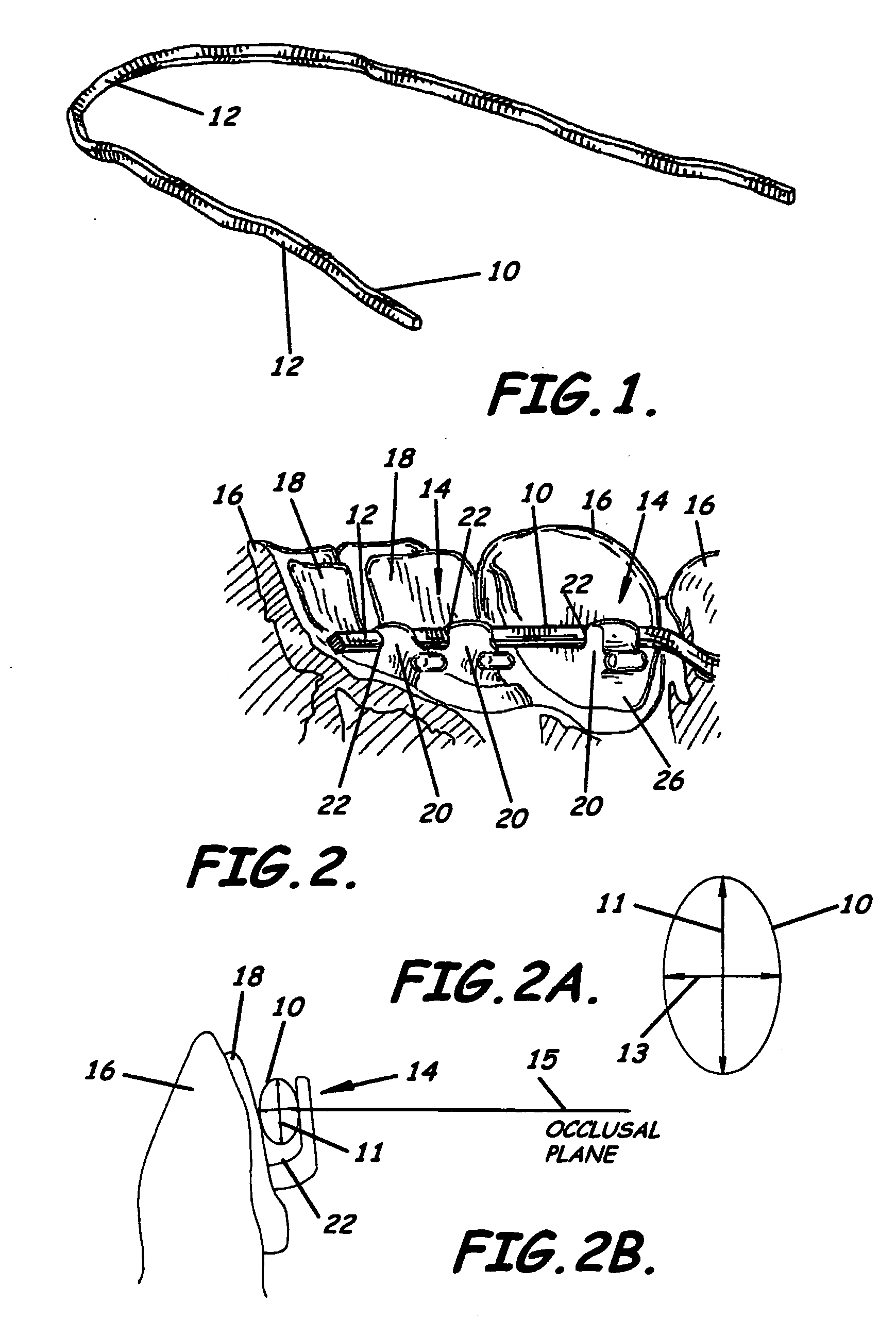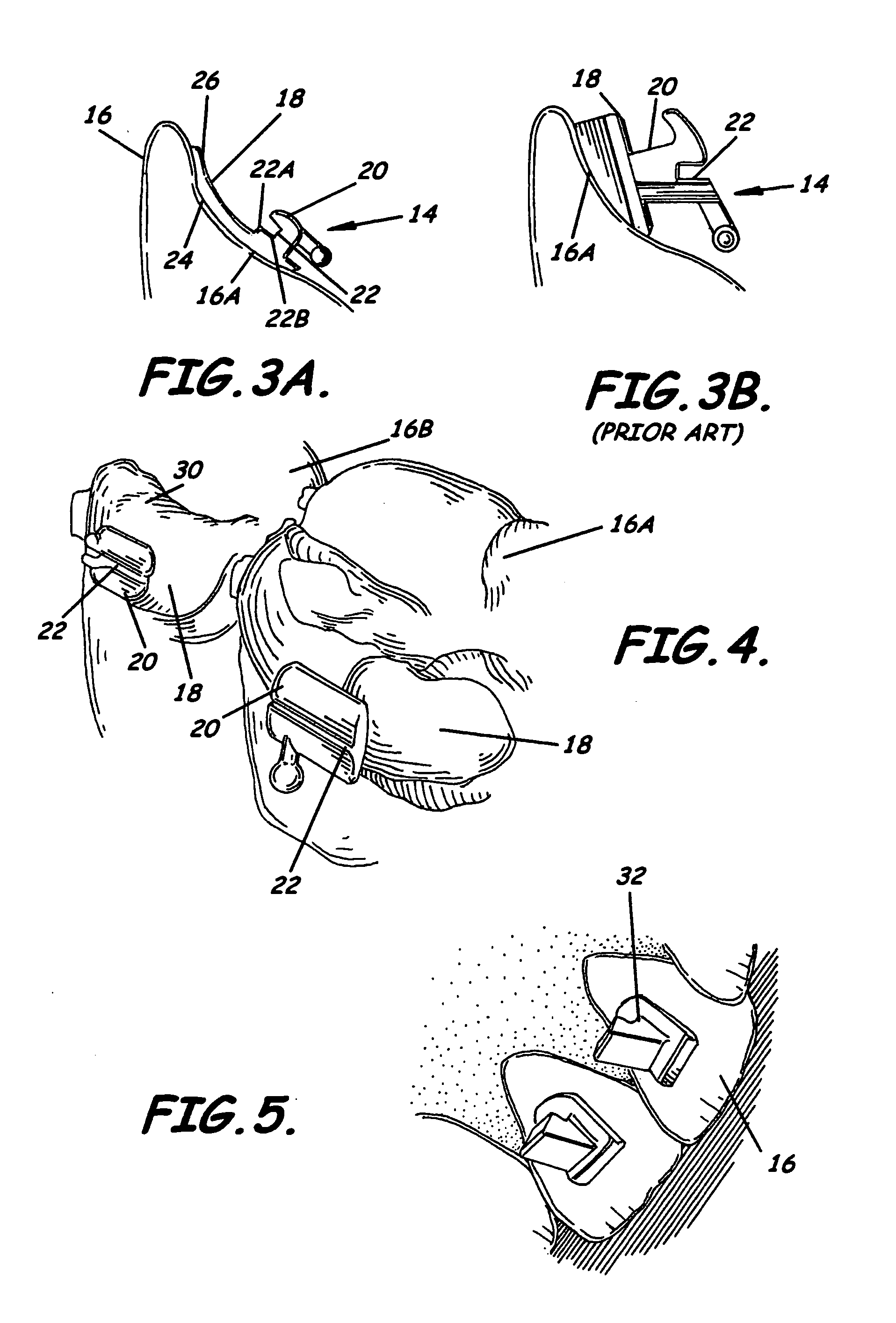Modular system for customized orthodontic appliances
a technology of orthodontic appliances and modules, applied in the field of orthodontics, can solve the problems of not widely adopted andreiko et al. method, inability to take into account unpredictable events in the finish position of teeth, and little impact on the treatment of orthodontic patients
- Summary
- Abstract
- Description
- Claims
- Application Information
AI Technical Summary
Benefits of technology
Problems solved by technology
Method used
Image
Examples
Embodiment Construction
[0055] Bracket Slot Parallel to Tooth Surfaces and Canted Archwire
[0056] As noted earlier, in the straight wire approach to orthodontics practiced today, the basic design of orthodontic wires in the prior art is a flat, planar shape. All the slots of the brackets, when the teeth are moved to the desired occlusion, lie in a plane. Accordingly, the archwire itself, which is of rectangular cross-section, has a flat, planar configuration. This is also the case for wires to be used with the CONSEAL™ brackets mentioned previously. While the cross-section of the wire is oriented in a vertical manner (the longer side of the wire is vertical), the archwire still forms a plane that is substantially parallel to the occlusal plane and the orientation of the cross-section is maintained along the wire. The primary reason for this phenomenon is the ease of industrial manufacturing of archwires of flat planar configuration. In a first aspect of the invention, we propose a significant departure fro...
PUM
 Login to View More
Login to View More Abstract
Description
Claims
Application Information
 Login to View More
Login to View More - R&D
- Intellectual Property
- Life Sciences
- Materials
- Tech Scout
- Unparalleled Data Quality
- Higher Quality Content
- 60% Fewer Hallucinations
Browse by: Latest US Patents, China's latest patents, Technical Efficacy Thesaurus, Application Domain, Technology Topic, Popular Technical Reports.
© 2025 PatSnap. All rights reserved.Legal|Privacy policy|Modern Slavery Act Transparency Statement|Sitemap|About US| Contact US: help@patsnap.com



